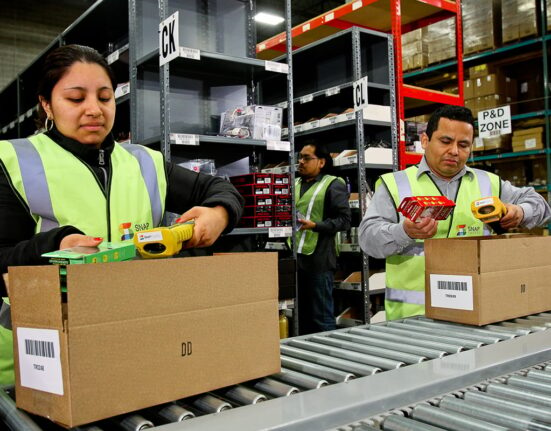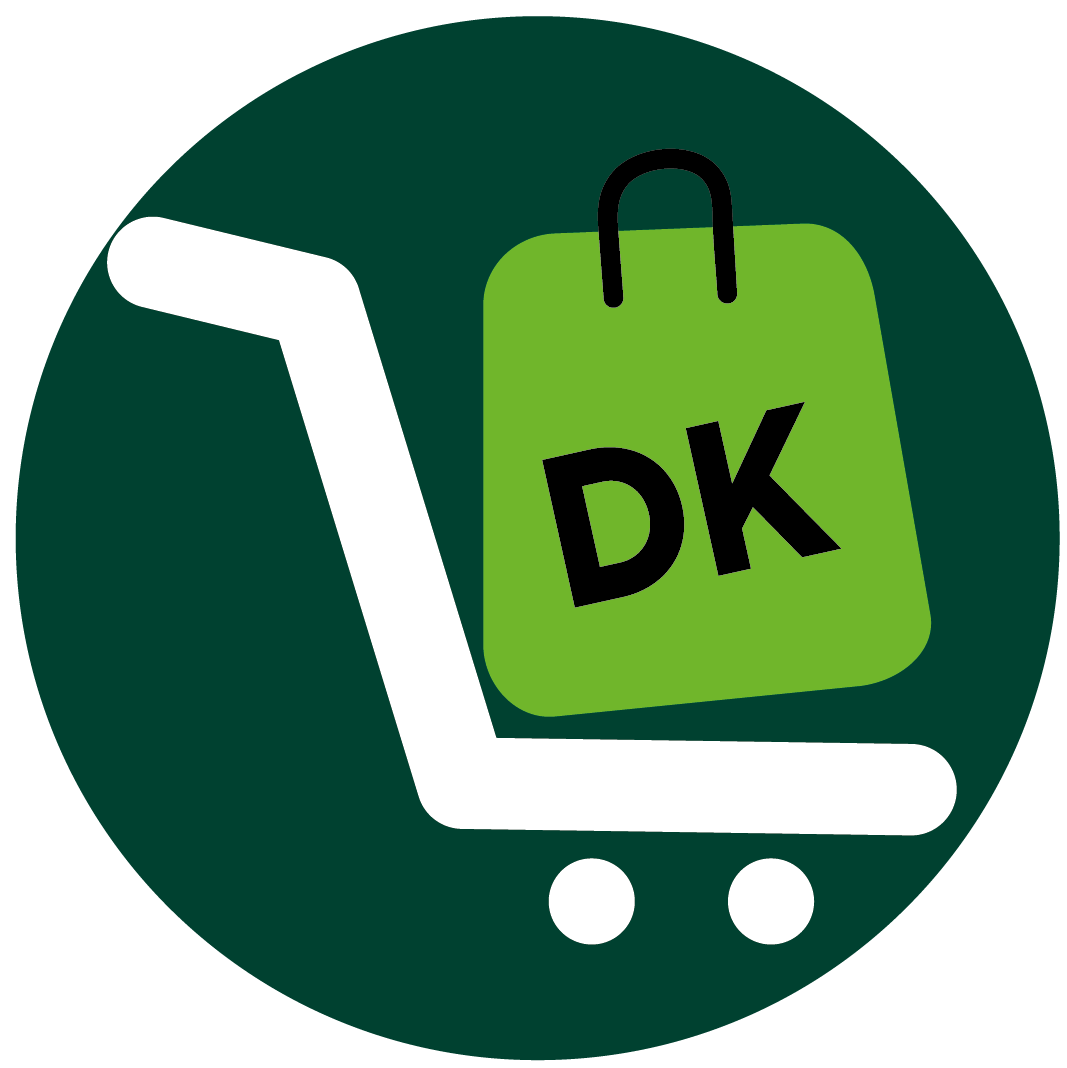Introduction
If you ever dream of owning a thriving online store filled with your handcrafted creations, then Etsy, the bustling marketplace teeming with unique, handmade, and vintage treasures, beckons like a siren song. It whispers promises of global reach and financial success, a haven for your artistic spirit and entrepreneurial drive.
With this, Etsy is the perfect platform to turn that dream into reality. But hold on, before you dive headfirst into opening your Etsy shop, let this guide peel back the curtain for you.
So is launching into this marketplace truly the key to unlocking your creative dream, or is it a path paved with hidden challenges? Is diving into the Etsy marketplace a wise investment of your time and resources? Is it all sunshine and rainbows? Read on to find out.
LET’S CUT TO THE CHASE!
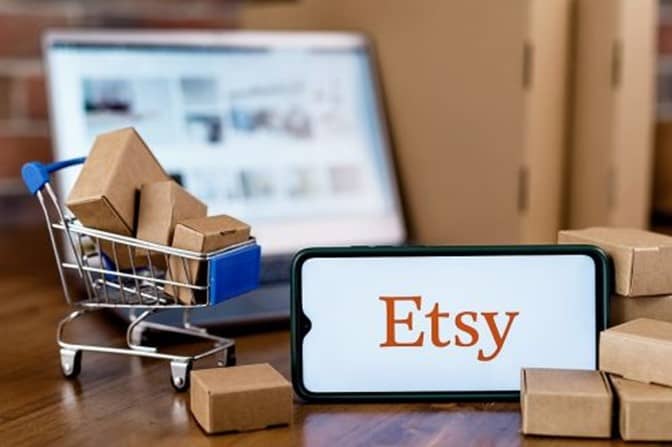
BUY IT IF
- You are prepared to invest in listing fees, transaction fees, and payment processing fees.
- You understand the value of pricing your items competitively while still covering your costs and making a profit.
- You have a strategy for managing shipping costs, which can significantly impact your pricing structure.
- You are ready to handle the potential cost of advertising and promotions to stand out in a crowded marketplace.
DON’T BUY IT IF
- You expect quick riches. Building a successful Etsy shop takes time and consistent effort. Be prepared for a marathon, not a sprint.
- You have limited financial resources. Even with minimal upfront costs to open an Etsy shop, ongoing expenses like materials, fees, and marketing can add up quickly.
- You struggle with cost analysis. Understanding your true product cost is crucial to setting profitable prices. If you haven’t mastered costing, consider taking some time to learn the ropes before diving in.
The Bottom Line
Etsy offers a fantastic platform to sell your creations, but success hinges on strategic pricing. Carefully consider all your costs before setting prices to ensure you’re not only covering expenses but also turning a profit.
NOW, LET’S DETAIL THINGS FOR YOU.
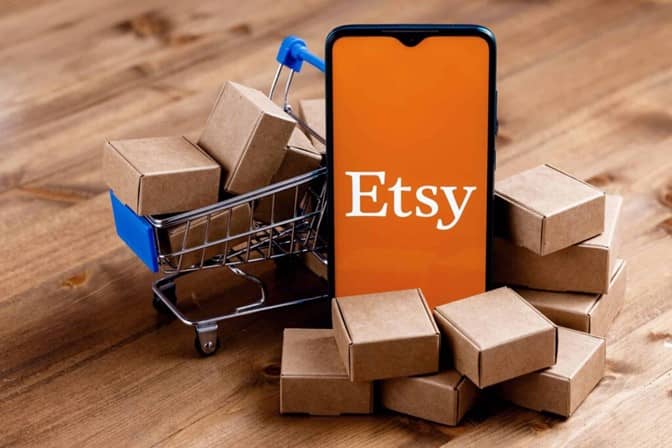
Launching your Etsy shop is straightforward; you create an account, set up your shop, list your products, and manage your inventory. But don’t let the initial simplicity fool you – true success on Etsy depends on understanding the various fees that directly affect your pricing strategy. Here’s a breakdown of the key costs to consider:
- Listing Fees: Each product you upload will incur a $0.20 listing fee, regardless of whether it sells. Listings are active for four months, so factor this cost into your pricing if you plan to keep your products available for an extended period.
- Transaction Fees: Once you make a sale, Etsy takes a 6.5% cut of the total transaction amount, which includes both the product price and the shipping cost you set. This fee ensures a portion of each sale goes towards maintaining the Etsy marketplace.
- Payment Processing Fees: When you choose to accept payments through PayPal, there’s an additional processing fee based on their structure. This fee is separate from Etsy’s transaction fee and is essentially PayPal’s cut for handling the financial transaction.
- Offsite Ads Fee (Optional): While not mandatory for all sellers, Etsy offers optional Offsite Ads to promote your products across the web. You only pay a fee for this service if a sale originates from one of these ads. This fee structure allows you to control your advertising spending while potentially reaching a wider audience.
Be mindful that the platform bills listing fees in USD, so if your bank’s currency is different, the amount may vary with exchange rate fluctuations. Remember, these fees all eat into your profit margin, so it’s crucial to factor them into your pricing strategy from the very beginning.
WHAT’S THE CATCH WITH AN ETSY STORE?
The initial charm of Etsy is undeniable – opening a shop and showcasing your creations to the world feels refreshingly straightforward. But beneath that user-friendly setup lurks a hidden complexity: the delicate dance of pricing strategy. Here’s why: Unlike a traditional store with a defined customer base, Etsy throws you into a vibrant online marketplace overflowing with millions of sellers, all vying for attention.
Standing out in this sea of products requires more than just beautiful creations. You need to invest in high-quality materials, develop a captivating brand identity, and master the art of product photography – each element potentially influencing your pricing decisions.
That’s just the first hurdle. Etsy itself takes a slice of your profit through a combination of listing fees, transaction fees, and payment processing fees. These fees can feel particularly significant for low-priced items, where a seemingly small percentage can translate to a large chunk of your potential profit.
To succeed, you need to meticulously calculate your production costs, factor in Etsy’s fees, and arrive at a price point that not only attracts customers in this competitive landscape but also ensures you’re turning a profit. It’s a balancing act that requires careful consideration and strategic planning. Don’t let the initial ease of setting up an Etsy shop deceive you – true success hinges on your ability to navigate the intricacies of pricing within a crowded marketplace.
WHAT YOU NEED TO KNOW.
When it comes to Etsy pricing, understanding the full picture is key to setting prices that turn a profit. Here’s a breakdown of the crucial factors to consider:
- Know Your Niche: Choosing a niche with a dedicated customer base allows you to target your pricing strategy effectively. Research popular trends, analyze competitor offerings, and identify gaps in the market. This helps you determine if your product idea can fetch a premium price within a specific niche or if you need to adjust your pricing based on existing competition.
- Quality Matters, But So Does Price Point: High-quality materials and expert craftsmanship naturally influence your pricing. But remember, you’re not operating in a vacuum. Analyze the competition – are there similar products with a lower price point but slightly less impressive quality? Can you justify a higher price with exceptional materials and unique design elements? Striking a balance between quality and affordability is crucial to attracting customers within your chosen niche.
- Building Trust Through Service: Excellent customer service goes hand-in-hand with building a loyal customer base. But remember, exceptional service can take time; responding promptly to inquiries, addressing concerns effectively, and offering a smooth buying experience all require dedicated effort.
Factor this time investment into your pricing strategy. Can you offer a slightly higher price point to offset the time spent on exceptional customer service, knowing it fosters repeat business and positive word-of-mouth recommendations?
- Etsy’s Fees: A Calculated Cut; Don’t forget Etsy’s fees – there’s a $0.20 listing fee per item and a 6.5% transaction fee on every sale (which includes both the product price and shipping cost you set). Additionally, payment processing fees (usually around 3% + $0.25 per transaction) further eat into your profit margin.
Understanding these upfront costs is essential. You need to factor them into your pricing from the very beginning to ensure you’re not just covering Etsy’s cut, but also turning a profit on your creations.
- Time is Money (Especially on Etsy): Building a successful Etsy store requires significant time investment – from creating products and managing listings to handling customer service and marketing your shop. Your pricing strategy should reflect this ongoing time commitment. Can you justify charging a premium price if you’re pouring significant hours into creating high-quality products and providing exceptional customer service?
- Standing Out in the Crowded Marketplace: With millions of sellers on Etsy, competition is fierce. While high-quality photos and excellent customer service are crucial for standing out, your pricing strategy also plays a vital role. Consider offering competitive prices for similar products, or adjust your pricing to highlight unique design elements or superior materials. Finding the right balance will attract customers and ensure you’re not lost in a sea of similar offerings.
WHAT ARE ETSY STORE’S COMPETITORS OFFERING?
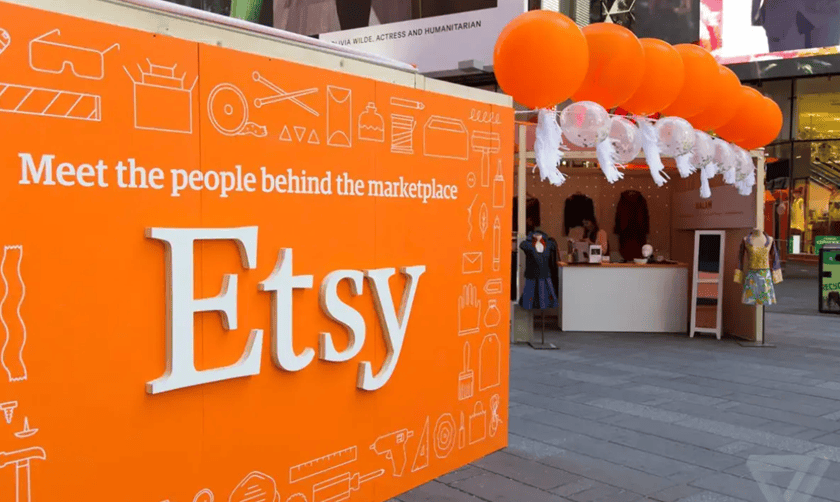
Etsy vs. Shopify:
When comparing Etsy to Shopify, you’ll notice significant differences in pricing and control. Etsy charges a $0.20 listing fee per item, a 6.5% transaction fee on sales, and varying payment processing fees. These costs are relatively low, making it easy for you to start selling with minimal upfront investment.
On the other hand, Shopify has higher upfront costs, including monthly subscription fees ranging from $24 to $299, depending on the plan you choose. If your business is more complex, Shopify offers a Plus plan starting at $2,300 USD per month on a 3-year term. While Shopify’s fees might seem steep, you gain full control over your store and brand, with no listing fees and transaction fees as low as 2.9% plus $0.30 per sale if using Shopify Payments. This control can be advantageous if you plan to scale your business significantly.
Etsy vs. Amazon Handmade:
As said earlier, Etsy provides a low-cost entry point with a $0.20 listing fee per item, a 6.5% transaction fee on sales, and additional payment processing fees. Amazon Handmade, however, charges no listing fees or payment processing fees but takes a hefty 15% referral fee on each sale.
Although Amazon Handmade has higher referral fees, you gain access to Amazon’s vast customer base, which can drive significant traffic to your products. For you, this means evaluating whether the higher referral fee is justified by the potential for increased sales volume through Amazon’s platform.
Etsy vs. eBay:
Etsy’s fee structure includes a $0.20 listing fee per item, a 6.5% transaction fee on sales, and varying payment processing fees. In contrast, eBay charges two main types of selling fees: an insertion fee and a final value fee. Each month, you get up to 250 zero-insertion fee listings. After this allowance, insertion fees apply and are non-refundable if the item doesn’t sell. Final value fees are calculated as a percentage of the total sale amount plus a per-order fee: $0.30 for orders $10.00 or less, and $0.40 for orders over $10.00. If you have an eBay Store or sell vehicles, different fees apply. eBay’s variable fee structure requires careful consideration to understand how it will impact your profit margins.
>>> PRO TIPS : Starting An Etsy Store: Waste Of Time Or Not?
WHAT AFFECTS AN ETSY STORE’S PRICES?
When it comes to pricing your Etsy creations, several key factors come into play:
Material Math: The cost of high-quality materials is a direct investment in your product’s value. Carefully source materials at competitive rates to ensure your pricing reflects their worth.
Time is Money: Every hour you dedicate to crafting your creations needs to be factored into the price. Consider the labor involved in production to ensure your pricing reflects the time and skill invested.
Overhead Expenses: Remember the hidden costs! Etsy fees (listing, transaction & payment processing), packaging materials, and even marketing efforts all contribute to your overhead expenses. Factor these in to arrive at a profitable price point.
Competitors: Researching your target market and competitor pricing strategies is crucial. Understanding what similar products are selling for allows you to position your creations competitively while still ensuring a healthy profit margin.
WHAT AFFECTS PRICES IN THE INDUSTRY OVERALL?
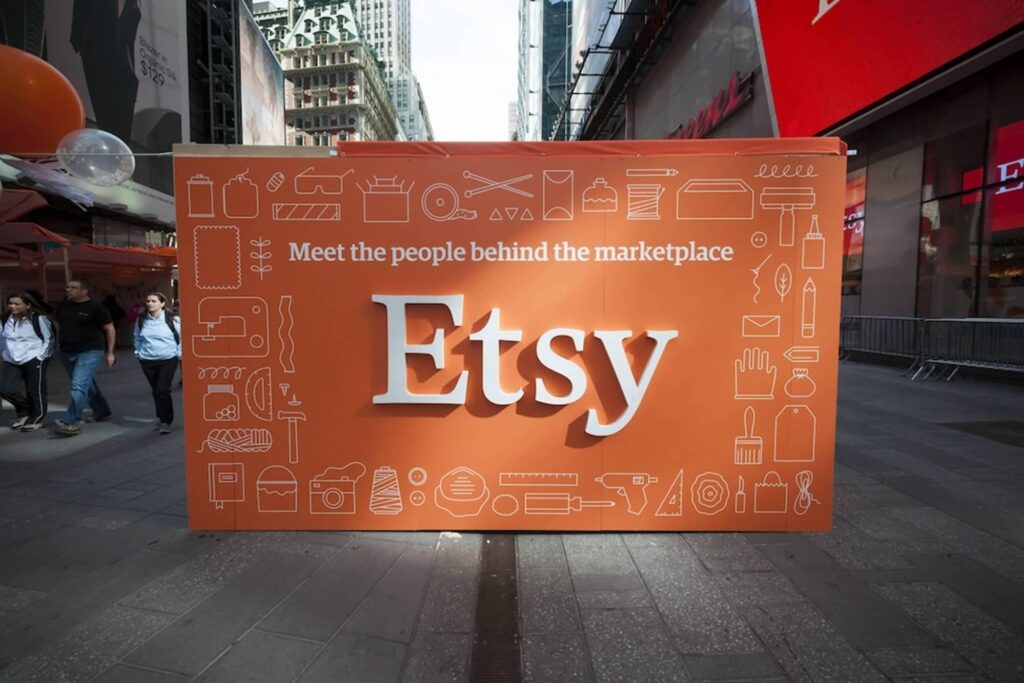
Evolving Consumer Preferences: Consumer preferences are constantly evolving. Stay on top of current trends – what materials are hot? What styles are in high demand? Adjust your pricing strategy to reflect these trends, potentially fetching a premium for items that capture the current zeitgeist.
Fluctuating Raw Material Costs: The cost of raw materials can fluctuate due to various factors. Be mindful of these fluctuations and adjust your pricing accordingly to maintain profitability.
The Competitive Landscape: The handmade industry is a bustling marketplace. Research your competitors’ offerings and pricing strategies. This will help you position your products competitively while ensuring you’re fairly compensated for your unique creations.
Economic Factors: Don’t underestimate the impact of broader economic factors. Exchange rates, inflation, and overall economic conditions can all influence pricing strategies. Staying informed allows you to adapt your pricing as needed to maintain a healthy profit margin.
>>> GET SMARTER : Starting An Etsy Store: Waste Of Time Or Not?
HOW TO GET THE BEST DEAL WITH AN ETSY STORE?
- Start Focused: Begin with a curated selection of high-quality products. Refine your pricing strategy before expanding.
- Master the Search: Research competitor pricing and market trends. Optimize listings with relevant keywords, captivating descriptions, and stunning photos.
- Market Like a Pro (for Free): Leverage social media and Etsy’s tools to reach customers without a hefty budget.
- Become a Cost Tracker: Monitor Etsy fees, marketing efforts, and production costs to ensure profitable pricing.
- Prioritize Customer Service: Positive reviews and repeat customers come from exceptional service. Respond promptly and strive for a smooth buying experience.
CAN YOU AFFORD AN ETSY STORE’S PRICES?
Deciding whether you can afford an Etsy store depends on understanding the platform’s fee structure and how it aligns with your business goals. Etsy’s fees include a $0.20 listing fee per item, a 6.5% transaction fee on sales, and varying payment processing fees.
Obviously, these costs are relatively low, making Etsy accessible even if you’re a new seller. However, don’t get carried away. These fees can add up, especially if you have a high volume of low-priced items.
Ultimately, affordability on Etsy depends on your ability to strategically price your products, manage costs, and maximize sales volume to ensure that the fees don’t eat into your profits. So carefully deliberate these factors and you can determine if an Etsy store is a viable and affordable option for your business.
FINALLY: SHOULD YOU BUY AN ETSY STORE OR NOT?
Open an Etsy shop if you’re passionate about your creations, have a well-defined niche, and are prepared to hustle. Building a successful shop requires time, effort, and strategic pricing to account for Etsy fees and material costs. But with dedication, Etsy can be a launchpad for turning your passion into a profitable online business.
However, if you’re looking for a low-maintenance, quick, and easy way to riches, Etsy might not be the right choice for you. Building a successful presence takes time and consistent effort. If you’re not prepared to invest the time and plan for potential challenges, Etsy might not be the right fit for your current goals.










